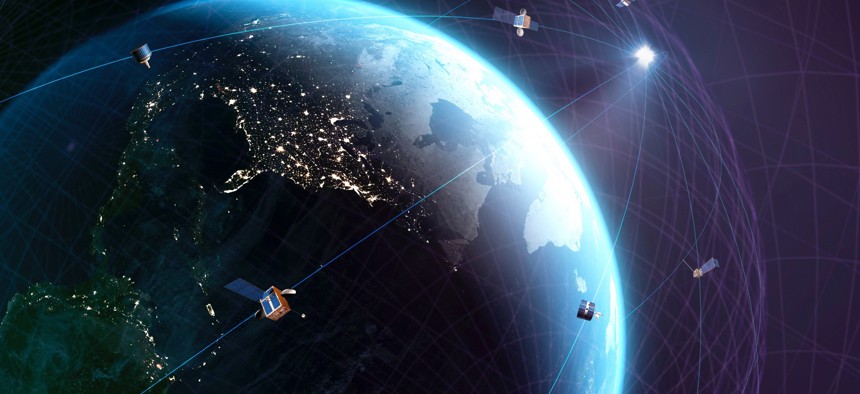Space agencies are reforming acquisition to accelerate commercial tech integration

Space and intelligence agencies are deploying more flexible acquisition practices, such as bailment agreements and OTAs, to lower the barrier to entry for commercial companies. MARK GARLICK/SCIENCE PHOTO LIBRARY / Getty Images
The nation’s space agencies are leveraging new procurement techniques to get their hands on critical emerging technologies and maintain U.S. competitiveness.
U.S. space agencies are developing a set of new acquisition programs and policies to speed up the purchasing of critical emerging technologies while reducing barriers to entry for the commercial space industry, officials said on Tuesday.
Frank Avila, acting director of the National Geospatial-Intelligence Agency, said his organization is increasingly leveraging procurement vehicles known as bailment agreements, which can be established in a matter of weeks and allow the agency to temporarily own and test commercial satellite systems and other technology solutions.
"It's kind of a very low barrier to entry for a company to put this solution in front of us, and us to be able to kick the tires on the solution rather quickly," Avila said at an event hosted by the nonprofit Intelligence and National Security Alliance. "That can help inform what we do next, in some cases, evolving to a greater partnership with industry to mature that solution ... or in some cases, go straight to contract."
The National Geospatial-Intelligence Agency began using the unconventional procurement method in 2019, issuing three bailment agreements that year. The agency issued more than 20 additional bailment agreements by 2021, while increasingly adopting Other Transaction Authority agreements to boost its research and development initiatives.
The National Reconnaissance Office, tasked with developing, launching and overseeing U.S. intelligence satellites, is also increasingly leveraging commercial innovation and hybrid government-commercial digital architectures to meet mission needs, according to Pete Meund, director of NRO's commercial systems program office.
Meund said the agency is expected to release a request for proposal by the end of the month seeking new companies that specialize in electro-optical imagery and satellite systems, following the success that U.S. intelligence agencies had in aiding Ukraine during the Russian invasion by doubling its procurement of commercial electro-optical imagery.
NASA also announced plans earlier this summer to collaborate with industry on developing a new hyperspectral infrared sensor that involves electro-optical, microwave and radio frequency sensors. The agency is expected to release a request for proposal this fall.
Maintaining U.S. competitiveness in space will require adopting new, often-changing procurement techniques, in addition to a robust commercial space industry, according to Jeremy Leader, acting deputy director for the Space Force Space Systems Command's commercial space office.
"The mindset that we have to build these acquisition strategies and just snap the chalk line and say they're good — those days are gone," Leader said. "We have to be flexible, even within the acquisitions that we have, to be able to move in different directions."


